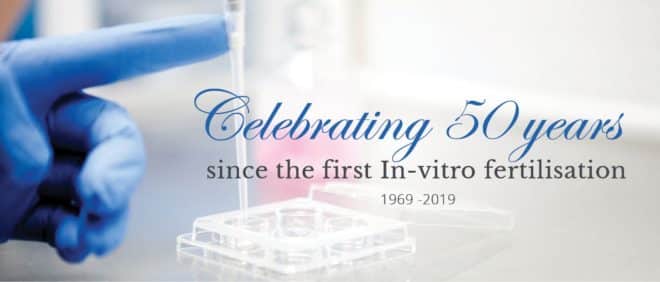
This year is the 50th anniversary since the essence of the City Fertility business was discovered – the successful fertilisation of an egg in-vitro!
After years of research and trials, in 1969 Robert Geoffrey Edwards and Patrick Christopher Steptoe, fertilised human oocytes in a petri dish for the first time. Following this in 1970, Edwards a Professor in Human Reproduction, and his research partner, gynaecologist and surgeon Steptoe started working with human patients with complicated and individualised gynaecological conditions.
However, it took Edwards and Steptoe another eight years to modify medical procedures, manage funding issues and contend with public opinions before they celebrated the birth of the first baby conceived through IVF in 1978 – Louise Brown.
Due to this amazing biomedical discovery, it is estimated that more than 8 million babies have now been born worldwide as a result of IVF and other assisted reproductive technologies. An incredible achievement, which the whole team at City Fertility are very proud to be part of.
Here is a small summary of some of the key developments that led to the first successful fertilisation of an egg in-vitro*:
- In 1968, Patrick Steptoe, a practicing gynecologist at Oldam General Hospital who pioneered the use of laparoscopy in gynaecology, teamed up with Edwards, a professor of human reproduction at Cambridge University, to try to achieve a successful pregnancy in humans using IVF.
- Their collaboration started when Edwards attended a lecture Steptoe gave on laparoscopy at the Royal Society of Medicine in London.
- They initially achieved successful fertilization and cell division of eggs in vitro(in a petri dish) with freshly extracted semen, but were unable to successfully implant the fertilized egg into the female uterus until 1978.
- They manipulated hormone levels in the female until the eggs were fully mature and then extracted several eggs from the ovaries through laparoscopy, an invasive technique requiring entry through the navel (they initially extracted immature eggs which proved unsuccessful).
- The doctors fertilized the eggs in vitro, and waited until the fertilized eggs divided into eight cells before implanting them into the female uterus (up until the mid-1970s, they had waited until the fertilized egg divided into 100 cells before implantation).
- In 1976 Edwards and Steptoe began working with an infertile couple, Lesley and John Brown.
- In the successful attempt, Edward and Steptoe transferred a fertilized egg at midnight, the time at which the egg was mature—accidental timing that they later discovered was critical when they realized that diurnal cycles of hormonal levels are crucial to the success of the egg implanting in the wall of the uterus.
- On 25 July 1978, Leslie gave birth to Louise Brown, the first “test tube baby.”
If you are looking for fertility advice, City Fertility can help you in a range of ways including information booklets, fertility information seminars, over the phone advice from our Fertility Advice Centre or a consultation with one of our experienced specialists.
Take the first step towards parenthood, get a fertility health check. Book an appointment today.
Phone: 1300 354 354
Email: contactus@cityfertility.com.au
Follow us: Facebook | Instagram
Image courtesy of Shuterstock















